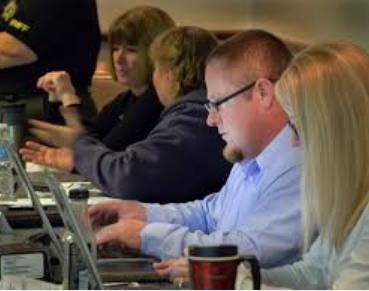


You Have a Crisis Communications Plan. Now It’s Time to Test It with a Tabletop Drill.
By Nora Jacobs, Hennes Communications
Organizations often assume that having an up-to-date crisis communications plan on the shelf will ensure that responding to a crisis event will go smoothly as a result. If the plan was carefully researched and based on good knowledge of the organization, that may well be the case. But there’s no way to know for sure until a crisis occurs and members of the team put the plan to test.
In some cases, team members will find that the plan works flawlessly. It will save them hours of organizing and spur-of the-moment decision-making. Their messages will get out in a timely manner and they will reach all the stakeholders that need to know about the event. They will be able to continue operations while the crisis is under management and they will return to normal business more quickly, with less damage to their reputation.
In other cases, putting the plan into action for the first time when a crisis hits may reveal some surprises. There may be some gaps in information. Not all the team members may clearly understand their role. Some resources may be missing. Simple details such as passwords, mobile numbers and resource contact information may be out of date. For a very sobering example of what can happen when a crisis response plan is used cold, one should consider the catastrophic fire at Notre Dame cathedral in Paris a little more than a year ago. In the article we wrote shortly after the fire occurred, we noted how a complex fire response plan, new staff and an enormously complicated fire protection system combined to nearly destroy an 850-year-old World Heritage site.
While it’s impossible to say whether a practice run would have helped Notre Dame better respond to the crisis it faced last summer, there’s no doubt it could have helped shortened the time it took to bring responders on site and bring the fire under control. What Notre Dame should have done, and what all organizations should do, is road-test their crisis plans in advance to make sure they actually work and that everyone responsible for managing crisis events knows how to use them.
Tabletop Exercise
The most common way to test an organization’s ability to communicate effectively during a crisis is to conduct a tabletop exercise (or drill) built around a crisis scenario likely to face the organization. At a given time, members of the crisis team assemble in one location, are introduced to the crisis and, using the crisis plan as their guide, begin to formulate a response. As the exercise progresses, the leader introduces new developments that make the crisis more complicated. As the event escalates, the crisis team must build out its response in proportion to the developments taking place.
At various times during the tabletop exercise, surprise “injects” (“monkey-wrenches”) are introduced, including hypothetical calls from stakeholders such as customers or local officials, questions from worried family members or requests from reporters. Team members must quickly figure out their response to social media, deal with media deadlines, consider the need for news conferences and coordinate with public information officers from other responding entities. Tabletop participants are assigned the task of generating news releases, creating email communications, writing posts for social media and developing responses to reporter questions.
At the end of the exercise, which typically lasts about three to four hours, the group will gather to conduct a “hotwash,” encompassing immediate “after-action” discussions and evaluations of the organization’s performance following the tabletop drill. This would include a candid assessment of what the team members did, what obstacles they encountered, what tools and resources would have improved their response and suggestions for improving the crisis plan.
In our experience, participants in crisis drills always agree the time was well-spent and heightened their awareness of the complexity of crisis response, as well as the need to come into the crisis management war room prepared to act quickly and effectively.
If your organization has a crisis plan that needs to be road-tested, give us a call to discuss setting up a drill for your team. We are currently conducting crisis drills during the pandemic and have found Zoom to be an effective way to bring the crisis team around a virtual table for the exercise. Of course, if you don’t have a crisis communications plan, we’re available at any time to discuss how we might help create this essential component of your crisis response tool kit.
—————————————–
Interested in putting your team to the test? Give us a call at 216-321-7774 or send an inquiry to info@crisiscommunications.com